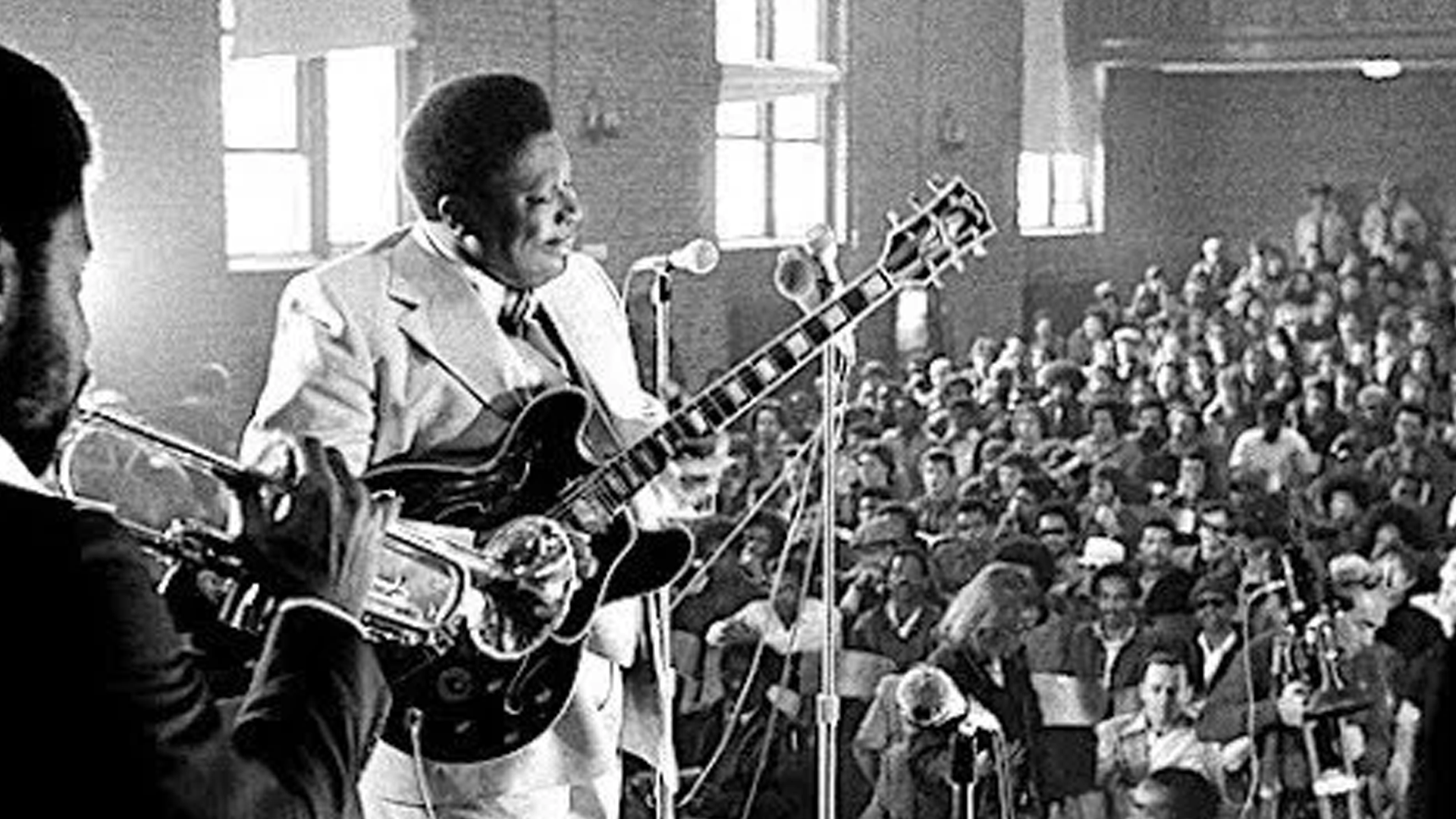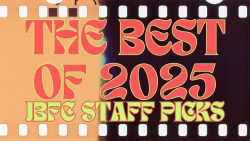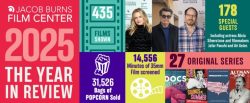Posted October 20, 2022
An Interview with Documentary Filmmaker David Hoffman
By Vincent Abbatecola, guest writer
“How many events that we have in our lives as Americans these days are just plain wonderful? That’s this one…It’s just an incredible interaction, an explosion of entertainment and people.” —David Hoffman
With Thanksgiving around the corner, the Jacob Burns Film Center has a special event planned for the community, commemorate the 50th anniversary of David Hoffman and Harry Willand’s 1973 documentary, Sing Sing Thanksgiving, a film that chronicles the preparations and performances for a concert for to the inmates of Sing Sing Prison in Ossining, New York. The JBFC will host a Q&A with director David Hoffman, moderated by documentary filmmaker Ryan Miller on November 3 at 7:00, presented in partnership with Sing Sing Prison Museum and Community Partner Hudson Roots.
I was offered the opportunity to speak with Mr. Hoffman about what the film meant to him and how it all came together.
PLEASE NOTE: Sing Sing Thanksgiving is sold out. There will be a standby line starting one hour before showtime. Learn more by clicking here.
1) What made you choose this subject?
A colleague and I went into the prison and we said to the warden, ‘Hey, we could help. Maybe we could teach a class in how to make films, how to tell stories, and how to write theater.’ Because of Attica, he and other wardens were pretty open to the idea, and he let us in. We came in, and we worked for six months with about 50 guys in the class. They were incredible. There were a lot of Puerto Ricans from the Young Lords gang in New York City, and they were very creative guys.Due to a set of circumstances, we proposed to the warden a Thanksgiving Day concert, which we would film.
We said, ‘Well, maybe we could do it at Sing Sing Prison.’ We shot with seven crews over two days. We got real access like nobody had seen before. Nobody really knew what was going on in any prison, just like people don’t know today, except for Attica and the horrible violence that had occurred. This was completely new and completely open. It happened that we knew a wealthy New York printer, and he cared about the subject, and he gave us $50,000 to make that feature-length movie. We spent every single penny of it on those two days, essentially, and doing it just right. That’s where it came from.
2) How long did it take to put everything together?
Length of time doesn’t matter. There are documentaries that take 10 years, and there are documentaries that take two days to shoot. The thing is when it was done, when we were done filming those two days with the seven crews, we knew that we had captured something spectacular. It all sort of came together. We edited it as fast as we could, and we were entering a world where documentaries in the theater were new.
There had been several documentaries, including one of mine from 1969 called King, Murray. There were several other documentaries, and there was Woodstock coming into the theater, but ours didn’t get in. We didn’t have the money, and we couldn’t find the distribution. So, PBS ran the documentary in the prime time as a fundraiser at that time.PBS was new. It (the documentary) ran and was popular, and then it died. It was gone. Nobody saw it until I started selling DVDs. All of a sudden, it picked up an audience of people. Everyone who saw it, loved it. Then, when I went on YouTube and posted clips, it took off. I mean, the B.B. King sequence that I put together has 20 million views, which is a lot.
3) How did you choose who you wanted to perform? How did you reach out to them and convince them to participate?
In those days, like now, you don’t actually talk to performers when you have an idea; you talk to the management. There was a guy in New York, his name was Sid Seidenberg. He was very famous as a manager for B.B. King and for the Voices of East Harlem, who he suggested. We knew Joan Baez because we had been working on another documentary just before called Earl Scruggs: The Bluegrass Legend – Family & Friends, which is a 90-minute film for PBS on Earl Scruggs that includes Joan Baez in a 20-minute sequence, an amazing sequence. We knew her, and her husband at that time was in jail for protesting the draft. He was rather well-known. So, we knew she cared about that subject. B.B. King really cared. He had performed in several prisons, but nobody ever filmed it. He actually offered to bring the 26-piece band for free. We didn’t pay anyone for that concert. They all came because they were committed to giving the inmates a good time, and were also committed to inmate rights, which were in question at that time. There were various points of view towards that.
4) What was the biggest challenge?
We didn’t know if the whole thing could be done. First of all, it has major lighting. You can see that in some of the scenes. Second of all, we wanted first-rate recording, which was a 16-track recorder that we had to bring in. Then each crew, which was a soundman, a cameraman, and an assistant carrying the film and audio equipment had to have an officer with them, each person. We had our crews, we planned it all out. We told the crews what we wanted and we all set off in different directions. They were only communicating by an informal sort-of two-way radio system that wasn’t really reliable.
My job was to make sure the whole thing happened, but we didn’t know that B.B. King would get in with all that stuff. They had to check everything. It happened that you can see during the event, people arrived during the recording. So, the concert itself, which is about 40 minutes of the film or so, is terrific, but that isn’t for the whole movie. It’s all of the other stuff with the inmates, seeing them in their cells, hearing them talk, being real with us as we traveled around the joint. That is so amazing. That’s what gives you a sense of who those people are, rather than a concert film where you never get to know the audience. Here, you do get to know the audience and some of their thinking.
5) What made you want to do a Thanksgiving concert, as compared to just having it any other time of the year?
It was a time when the men in the joint get a special meal, and everybody felt kind of special about that. That’s why we chose that time. Plus, it was the time when we got the money and the warden said yes, and that was quite a thing. Think about that. My crew was maybe about 45 people. Then, there were members of the press. So, let’s say a total of maybe 60 or 70, plus the performers, that’s 100 people. That’s a lot of people to enter the joint within one period of time, spend maybe seven hours, and then leave.
6) How was it organizing the inmates who volunteered to help with the setup of the concert?
We couldn’t have done it without the men from the Young Lords, who were close to us, particularly Tony Pabon, who was one of the stars of the film. Unfortunately, six months after it was made, I never saw him again. He got out of the joint, but I don’t know what happened to him. There was Miguel Pinero, who became a major New York playwright. He’s passed on. Those guys were tremendously helpful. In addition, Tony Pabon went and talked to the African-American gang leaders, and they were just as cooperative. Those two communities were cooperative. Then, there was a local Mafioso group, and they were cooperative. Tony Pabon talked to everybody about how important this was, how meaningful it was, how hard it was to put together. Plus, we set up an inmate crew. We taught one of the inmate groups to use the 16-millimeter camera and audio, and they shot their own stuff. There isn’t much of it in the film, but what there is, is kind of fun.
7) There’s a bit halfway through the documentary where some of the inmates perform a skit in the middle of the concert. How did you convince them to not only be a part of the setup of the concert, but a part of the show itself and tap into their creativity?
They were a part of our class, so someone wrote that skit, which I had not seen before, although they were in the class. We had writing as part of the class and writing for theater. It’s a pretty powerful piece. In that particular case (the skit), the guy didn’t do it (the crime). But, many people that we talked to inside the joint, the inmates, they did do it (their crimes). They admitted to it. Some were beautifully living their time, trying their best to never have to go there again. So, that scene is a very important scene because it is inmate produced, if you will.
Hoffman’s Final Word
At the end of the interview, Hoffman offered some insight as to why Westchester citizens should take some time to view the film.
First of all, B.B. King saying to me after it was over, that it was the best concert he had ever done, was saying a lot because B.B. King was a perfectionist. He was already a world-famous blues performer who was considered to be the top of the game. He had been in the blues all his life when he came out of Mississippi. If that’s the best he ever did, the film is worth watching from that point of view.
Second, if you go by that institution today and live anywhere in Westchester County or over the other side of the river, you have no idea what’s going on. I’ve heard it from many people that they’ve changed somewhat for the better. There are more educational opportunities, etc. But, the place is unchanged. You can get a look at Sing Sing that nobody’s ever really seen before. If you live in the area, you’re going to know something about what goes on in there.
Third, how many events that we have in our lives as Americans these days are just plain wonderful? That’s this one. It doesn’t have a negative. It’s just an incredible interaction, an explosion of entertainment and people. When it’s over, you see people just leave, and you’ve had this 90-minute thing that is as good as it gets in terms of live performance and real individuals. Yes, it’s a moment in time, but is kind of universal, even though it’s 50 years old, and it’s very contemporary in terms of people’s feelings, I think.
PLEASE NOTE: Sing Sing Thanksgiving is sold out. There will be a standby line starting one hour before showtime. Learn more by clicking here.



